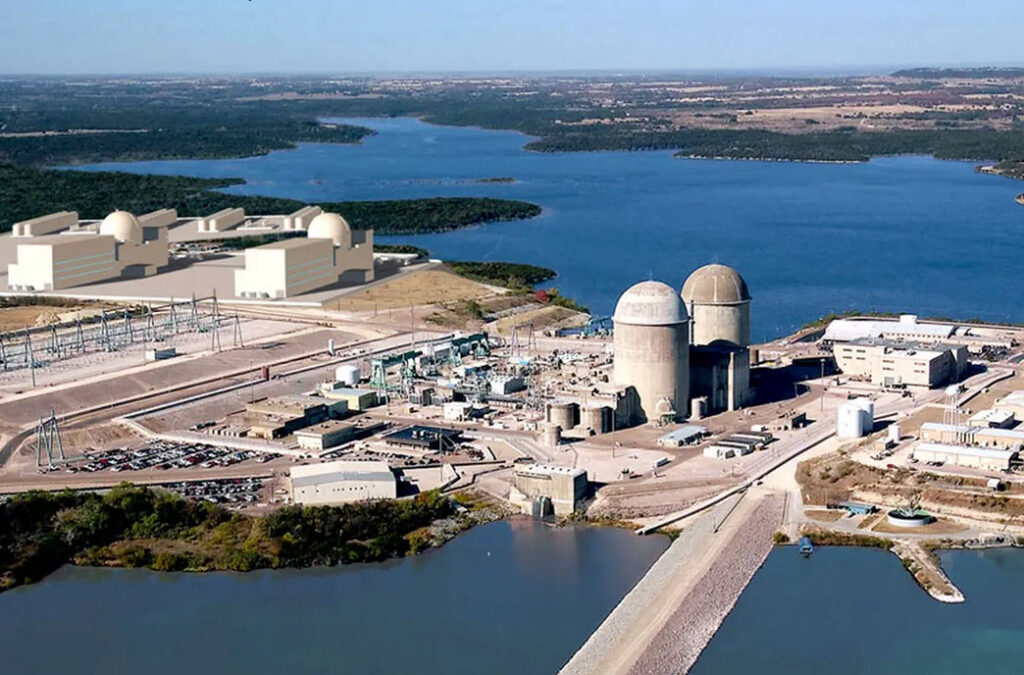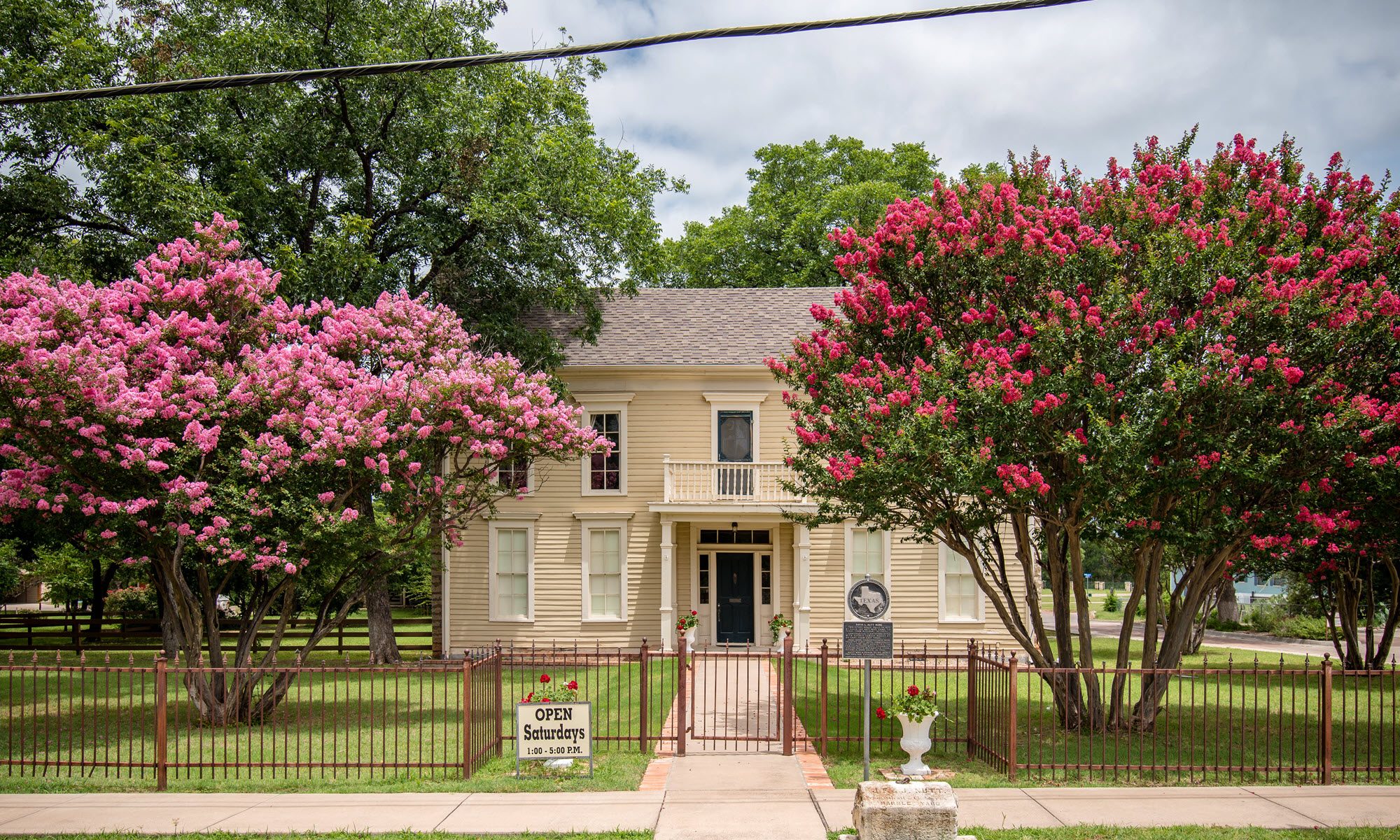
Comanche Peak Steam Electric Station
By
Bill Walters – February 2022
Part 1 of 3
This is a chronological history of the building of the Comanche Peak Steam Electric Station. On June 5, 1973 the application to build the plant was submitted. This involved some three tons of paper representing hundreds of hours compiling all types of studies and information relating to the plant, the development, safety, economic impact, and other factors.
In March 1974 the Commissioners Court discussed the need to improve Hwy 51 and FM 201 and to acquire “right of ways” for road improvement. That same year in July, Public hearings were held on the proposed Comanche Peak Steam Electric station located 14 miles southwest of Granbury. This will be a $779 million, 2,300,00 kilowatt nuclear plant owned by Texas Power and Light Company. There will be two generating units. One is scheduled for operation in 1980 and the second two years later. Several hundred construction workers will be needed to build the plant and the 3,200 acre lake. The lake will be used for cooling water. It will be formed by constructing a dam on Squaw Creek. During the seven-year period of construction (for both units) the construction employment is expected to average 800 -1,000 workers with a peak of about 1,400-1,500 during a 16-18 month period.
In October of 1974 Brown and Root Construction Company began moving dirt at the site. And in August of 1975 the cost of the project was revised to $987 million due to design changes and inflation. Constructions crews were working 2 10-hour shifts each day, six days a week.
May 14th 1975 workers reported finding dinosaur tracks in Unit no. 1 reactor cavity 80 feet below the surface. It was determined that the tracks were not unique and thus the construction could be continued. Texas Utilities used a rock saw and removed five of the more distinct tracks weighing up to 4.5 tons. The tracks were presented to the Somervell County Museum. Excavation continued on Squaw Creek Reservoir Dam which was expected to be completed in mid-1976 and will have over 5.5 million cubic yards of dirt and rock. The reservoir will take three years to fill and will contain 151,000 acre-feet of water. In comparison, Lake Granbury has 155,000 acre-feet of water. One reason the reservoir will be almost as large as Lake Granbury is because its average depth is more than Lake Granbury’s. At the Squaw Creek dam the water’s depth will be approximately 130 feet. At Lake Granbury the lake is only 73 feet deep at the dam.
In January 1976 Plant officials indicated the project was 12 % complete and in July of 1976 the Squaw Creek Reservoir was nearly complete. Its main function is to serve Comanche Peak Steam Electric Station. Lake Granbury will play a major role in the development of the reservoir. A large portion of the water that will fill the Glen Rose lake will come from Lake Granbury. A pipeline almost nine football fields long is nearing completion that will connect Lake Granbury to Squaw Creek Reservoir. The 48-inch pipeline, is 5 miles long will carry approximately 52,800-acre feet of water per year to the reservoir. It was filled over a period of three years.
In November 1976 Brown and Root, Inc. Security Personnel posted openings for Guards/Supervisors for Comanche Peak Nuclear Power Plant construction near Glen Rose. Starting salary at $5.25 per hour.
Part 2 of 3
In February of 1976 workers at Comanche Peak Steam Electric Station spent 34 hours recently completing the cement pour for the base of the containment building for the first unit at the plant. It contained over 6,600 cubic yards of cement and over 4-million pounds of steel reinforcement. When the building is completed, it will contain over 11,000 cubic yards of cement. All of the cement was mixed at the plant and it took 16 truck to complete the pour. The base is 12 feet thick and the walls will be 4.5 feet thick and will be 265 feet tall. June 1977 a 347-Ton Reactor arrived at the plant site. It took 2 years of construction and 1 month of travel to get to the site by barge from Chattanooga to Houston and by special rail car from Houston to Midlothian.
Around June of 1977 a revised Construction cost came out showing an estimated increase cost of $1.7 billion. And in February pumps began filling Squaw Creek Reservoir
Bomb threat charges were filed in 1978 against Leo Hankins of Glen Rose, a former employee of Brown and Root. Later that year Project management indicated that construction is on schedule and some 4,000 employees are averaging 50 hour weeks and 20,000 man hours per week.
Not everyone was in favor of the Nuclear Power Plant and on June 14, 1979 about 100 demonstrators occupied the Comanche Peak Nuclear Power Plant. The demonstration ended with law officers hauling off the protesters in buses. Trespass charges were filed on each demonstrator in Somervell County. There was much discussion in the public about the safety of the Nuclear Power Plant.
Three days after the 4th of July celebration in 1979 the steel liner for the second phase Comanche Peak Power Station construction was set in place. The tower contains some 110 tons of concrete with an 87 foot diameter.
In July of 1981 it was announced that the Squaw Creek Reservoir would go public and create a recreational facility known as Squaw Creek Park, consisting of 470 acres east of the reservoir mostly in southern Hood County. In July of 1982 200 Brown and Root employees were laid off thru September. This reduced the workforce from 5,100 to 4,900.
Part 3 of 3
The Comanche Peak Visitors Information Center opened in 1982 and as of August 1984 more than 25,000 persons toured the center. A Nuclear emergency test was performed in Dec of 1983 with a 65-siren warning system installed within a 10 mile radius of the plant in Somervell and Hood counties.
It was announced in August of 1984 the Comanche Peak Power Plant will be the first operating nuclear power plant in Texas and Plant Management announced that Unit 1 is 98% complete and Unit 2 is 65% complete. Scheduled for operation in 1985 and 1986 respectively.
Notice from the Texas Utilities Generating Company announced that on Monday, Oct 1, 1984 at noon, the emergency warning siren system located within 10 miles of the Comanche Peak nuclear power plant was tested. The sirens ran twice for one minute, with three minutes of silence in between. In a real emergency the sirens would be run for one or more three-minute periods.
On May 5, 1985 (27) Comanche Peak nuclear power plant staff members received their Nuclear Regulatory Commission reactor operator license certificates. Those from the Granbury area included Larry Agee, Jack Blackwell, Alan Codneys, Kyle Davis, Ralph Flores, Darrell Green, Ray Miller, Rod Nowell, Jim Rupert, Bart Smith and Norman Terrel. Later that month the first Disaster Drill was conducted.
As of June 1988 the plant employed about 8,000 people and each of the reactor units can produce 1,150 megawatts of electricity. The two units stand 265 feet tall and are designed to withstand earthquakes, tornadoes and aircraft crashes. Comanche Peak plant property takes in some 7,000 acres in Hood and Somervell counties. About half the acreage is taken up by Squaw Creek Reservoir. In addition to supplying plant cooling water, the lake is used for recreational activities such as fishing and scuba diving.”
In March of 1988 plant officials quoted construction costs of $6.62 billion for the plant compared to previous estimates of $5.27 billion. The plant will supply power to customers in Dallas, Fort Worth, Arlington, Grand Prairie, Garland, Irving, Plano, Richardson, Mesquite, Tyler, Waco, Wichita Falls, Odessa and Midland.
For the first time, May 10, 1989 the powerplant generated electricity and sent that electricity out on TU Electric’s power lines. The electricity was produced without using nuclear fuel during hot functional testing. Hot functional testing is the first of three extensive series of pre-operational tests.
In August of 1990 Comanche Peak nuclear plant began operations with Unit 1. The unit supplies enough electricity to power a city of about 400,000 people. The plant is expected to have an operational life of 40-50 years. In January of 1991 full-scale construction activities resumed at Unit 2. Unit 2 was expected to be operational in 1993.
Finally on August 7, 1993 Unit 2 of the Comanche Peak nuclear power plant was placed in commercial operation. Combined, the two units have 2,300,000 kilowatts of generating capacity, enough to serve a city 80 percent the size of Dallas.
